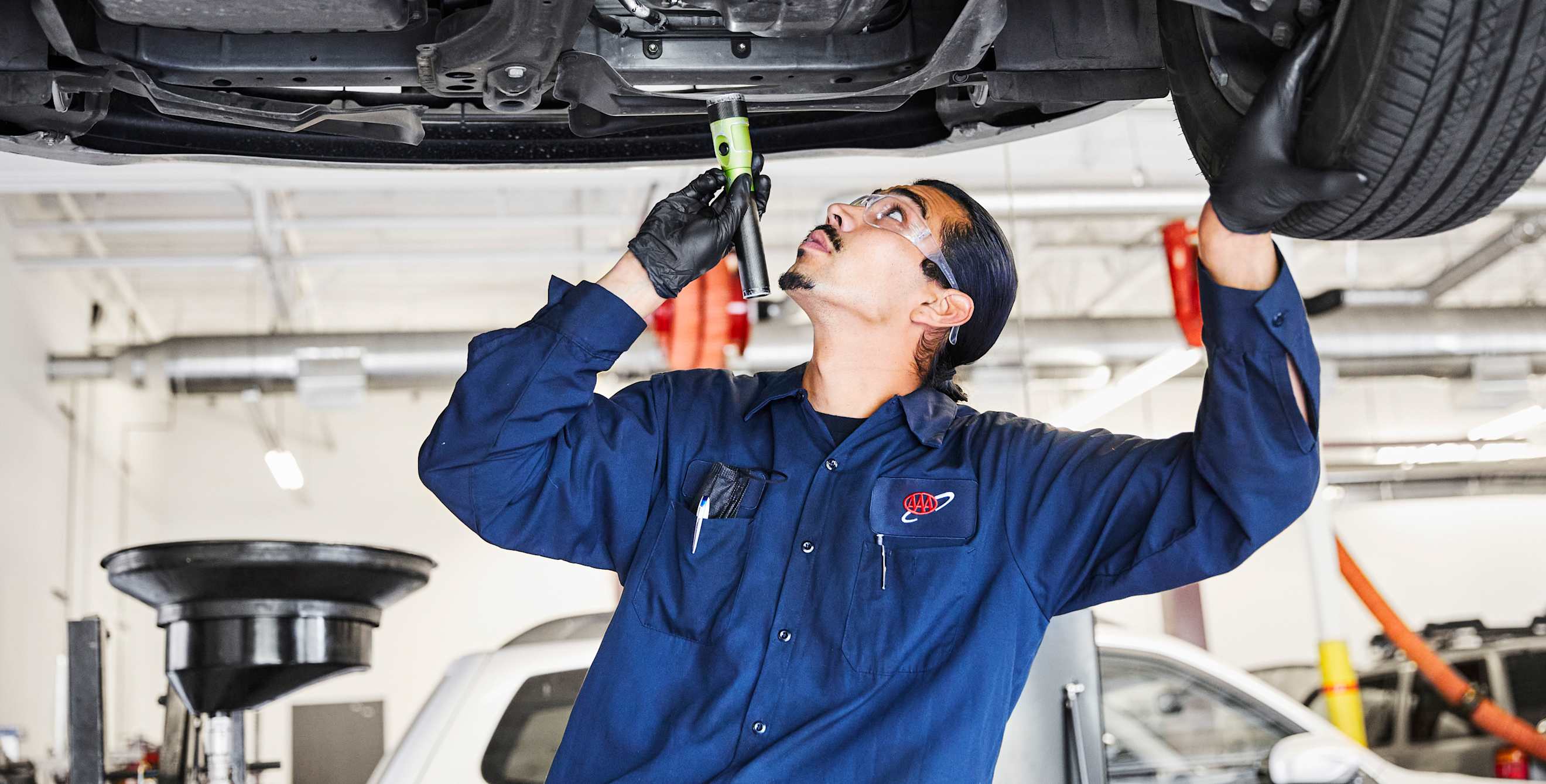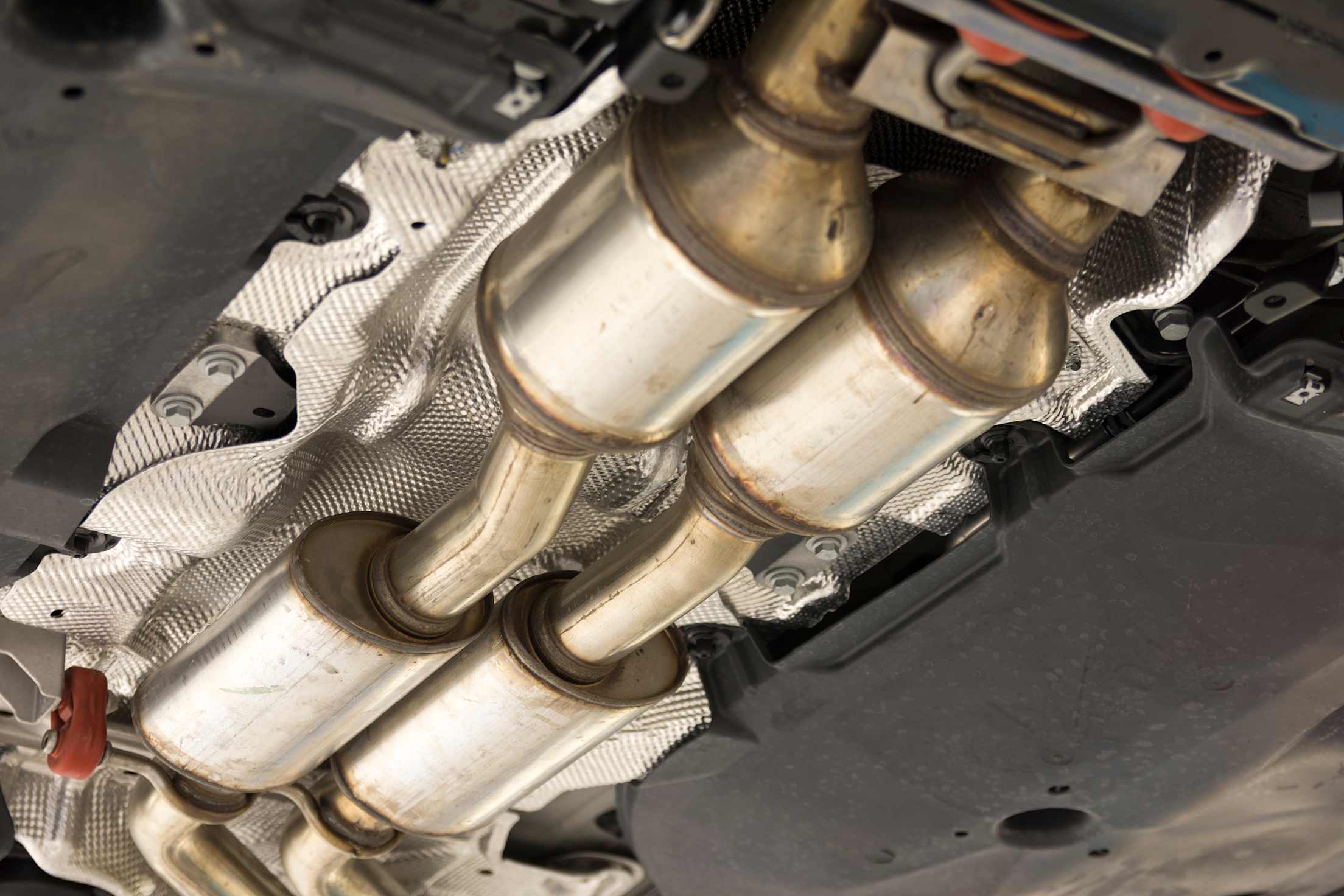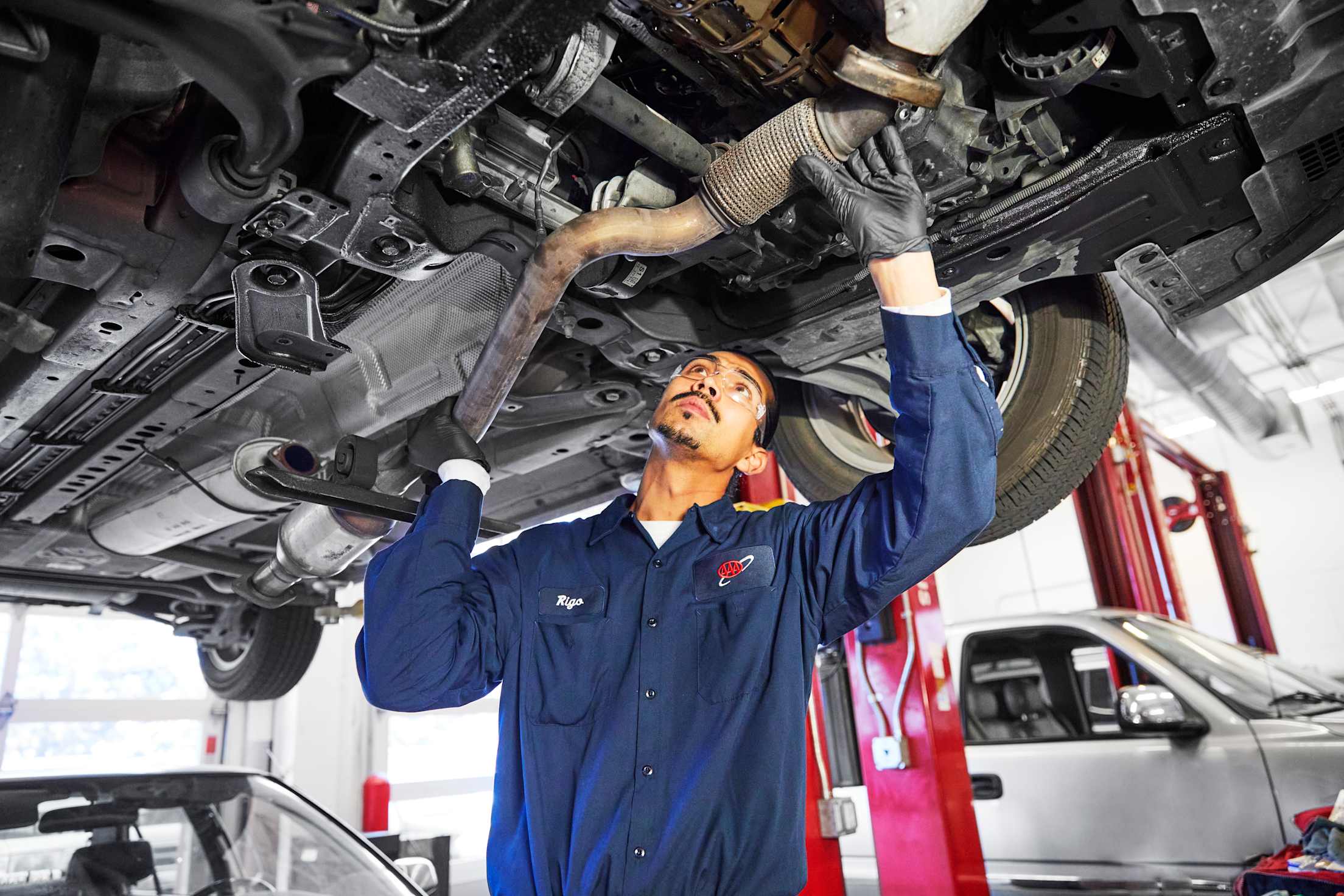
How to Prevent Catalytic Converter Theft
With theft becoming increasingly common, here’s how to protect your car and avoid costly repairs.

It can take less than five minutes for a thief to crawl under a car with a wrench, pipe cutter, or battery-powered saw and remove the catalytic converter from the exhaust system. Drivers are often unaware of the crime until they start the car and are greeted with an unexpected roar that sounds like a motorcycle or a revved up race car.
While catalytic converter theft has been happening nationwide for years, cities and police departments in the West—including San Francisco, Portland, and Seattle—have been warning drivers about rising cases since the end of 2019. In October 2020, the Seattle Police Department warned of a “dramatic rise” in catalytic converter thefts, especially from Toyota Priuses, in a press release.
Notoriously difficult to track, catalytic converter thefts were up the last time a survey on the subject was conducted by the National Insurance Crime Bureau. From 2008 to 2015, 25,394 insurance claims were filed for catalytic converter theft, according to their findings. Of those, almost a third of the thefts occurred in California. Since the data available only accounts for car owners that filed an insurance claim, it’s likely that the actual number of thefts is higher.
Combustion vehicles have at least one catalytic converter, and some models have two or three. With prices for repairs starting at $950, you could pay as much as $2,500 or more depending on the extent of the damage, according to Travis Mock, operations manager for AAA Automotive Repair Centers. While most cars only have the converter stolen, the theft could damage oxygen sensors and fuel lines, increasing your bill. While it might seem like a repair that can wait, driving a vehicle without a converter will be difficult due to the loss in power on acceleration, and in most places illegal due to the emissions violations.

Most cars have one catalytic converter, but they can have two or more.
What are catalytic converters and why are they being stolen?
The catalytic converter “is the single most effective device on our cars for reducing pollution,” says John Bridgwater, managing member of Wright’s Automotive Service, a AAA Approved Auto Repair shop in San Leandro, California. Widely introduced in the 1970s, catalytic converters were installed on new cars in an effort to reduce vehicle emissions and improve air quality. "Catalytic converters reduce toxic gases and pollutants from an internal combustion engine," says Mock.
The devices are made with precious metals, including platinum, palladium, and rhodium. The rising costs of the precious metals—palladium and rhodium are currently worth more per ounce than gold—and the ease of stealing a catalytic converter make them targets.
“Catalytic converter thefts are taking place because the converters contain several types of recyclable materials that can be easily scrapped for a quick profit,” says Michael Haobsh, public information officer for the San Mateo Police Department in California. “Thefts of catalytic converters increase each time the cost of scrap metal, particularly platinum, increases.”
What cars are most likely to have a catalytic converter stolen?
“Any vehicle with sufficient ground clearance is a target,” Mock says. But pickup trucks, SUVs, and Toyota Priuses are often targeted because of their exceptionally expensive catalytic converters, according to Bridgwater. Thieves target vehicles based on three simple criteria: ease of theft, value of the specific converter, and opportunity.

Park in lit, well-trafficked areas when possible.
How can I prevent catalytic converter theft?
Taking precautions to avoid theft is critical for car owners, especially for those with higher-risk vehicles.
1. Park carefully.
Common sense tactics—such as making your car more difficult to access or parking in a place with foot traffic—might help protect your vehicle. “Park your vehicle where it is secured, such as an enclosed garage,” Mock advises. If a garage is inaccessible, choose street parking strategically. Look for building entrances, well-lit main streets, and security cameras.
2. Have an anti-theft device installed.
There are some devices that make it harder to remove the converter, which can deter a thief. Often, car owners don’t think to install theft prevention devices (typically called catalytic converter plates, shields, or cages) until after a theft has occurred, Bridgwater says. While insurance companies don’t normally cover the cost of installation, these devices are highly effective and relatively inexpensive compared to the cost of replacing stolen parts. Bridgwater’s shop prefers Cat Security, which makes a metal plate that covers the converter and is designed for Priuses and Nissan NV. Mock says Cat Clamp, a cage device that makes stealing a converter much harder, can be installed by AAA repair shops, but they generally don’t sell them. Instead, the locking mechanism can be purchased easily online (limited options may be available at some local parts stores) and brought to the shop to be installed.
Some people may worry that adding these devices will void warranties, but Mock says that the law is on the consumer’s side. He cites the Magnuson Moss Warranty Act of 1975,15 USC, 2302 and Clean Air Act 42 of USA code 7541, which require that the manufacturer prove that the part you installed directly caused a failure. He adds, “If in doubt, check with the dealer.”
If you can’t get a device installed, etch your vehicle's VIN number in multiple places on the converter to make it easier for the part to be tracked and returned to you should it be stolen.
3. Install security cameras.
A digital lookout can be a deterrent and helpful for local law enforcement in the case of a theft. The San Mateo Police Department recommends installing security cameras facing the street or driveway where you park.
Is catalytic converter theft covered by insurance?
While your insurance policy obviously won’t stop thieves from running off with your car’s key components, it will cover the cost of replacement and repairs if you have comprehensive coverage. It's also a good time to take a look at your policy’s deductible to find out how much you would have to pay out of pocket if something were to happen.

What should I do if my catalytic converter is stolen?
"If your catalytic converter is stolen, you probably will not see anything at all, but the moment you start your car, it will be extremely loud and will probably scare the bejesus out of you," says Bridgwater. When you shift into drive and press on the gas pedal, the sound will get louder. You might not be able to accelerate to the same degree as you could before the theft. You can confirm the theft by looking under the car for a sawed off—and often hanging—exhaust pipe, or wait for your mechanic to inspect it.
If you have been the victim of catalytic converter theft, call your local non-emergency police department line or go to the department’s website to report the theft. If you intend to make an insurance claim, your agent will likely require you to report the theft to your local police department and get an official report. Next, call your insurance agent or submit a claim online if you have comprehensive coverage on your car to begin the claims process.
While you can drive the car, it’s likely for only a small distance and it's not advisable. Instead, use the AAA mobile app or call for roadside assistance to have your car towed to a nearby AAA Approved Auto Repair shop.
Exceptional coverage, extra savings, expert service. AAA Insurance.